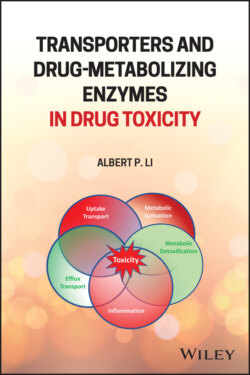Читать книгу Transporters and Drug-Metabolizing Enzymes in Drug Toxicity - Albert P. Li - Страница 27
2.3.2 Dose and Reactive Mtabolites
ОглавлениеThe idiosyncratic nature of DILI suggests that it is independent of dose; however, many DILI cases have occurred with doses of drugs >100 mg per day, and cases for drugs given at doses of 10 mg per day or lower have been reported only rarely [13]. Furthermore, the average daily dose of drugs reported to cause hepatotoxicity was higher compared to drugs not associated with this [13]. Moreover, extensive hepatic metabolism has been associated with a higher risk of hepatic adverse events from oral medications [14]. High daily dose and extensive drug metabolism in the liver are associated with high risk of DILI, supporting the hypothesis that the formation and accumulation of RMs beyond a critical threshold is the precondition triggering the development of liver injury.
The quantitative relationship between daily dose, formation of RMs and risk of DILI in humans was reported by Chen et al. [15]. By considering N = 354 FDA‐approved oral medications, the authors defined an algorithm for assigning a DILI score by factoring the relative contribution of daily dose, logP and RM, which permitted a quantitative assessment of clinical DILI risk:
The three parameters in the DILIscore formula (i.e. daily dose/Cmax, logP, and RM formation) contributed significantly to DILI risk with the order of RM > daily dose > logP. The relationship between calculated DILI scores and DILI risk was validated by three independent datasets retrieved from the literature, and the score model demonstrates its correlation with the severity of clinical outcome by applying to N = 159 clinical cases collected from the NIH’s LiverTox database (https://www.ncbi.nlm.nih.gov/books/NBK547852/).
